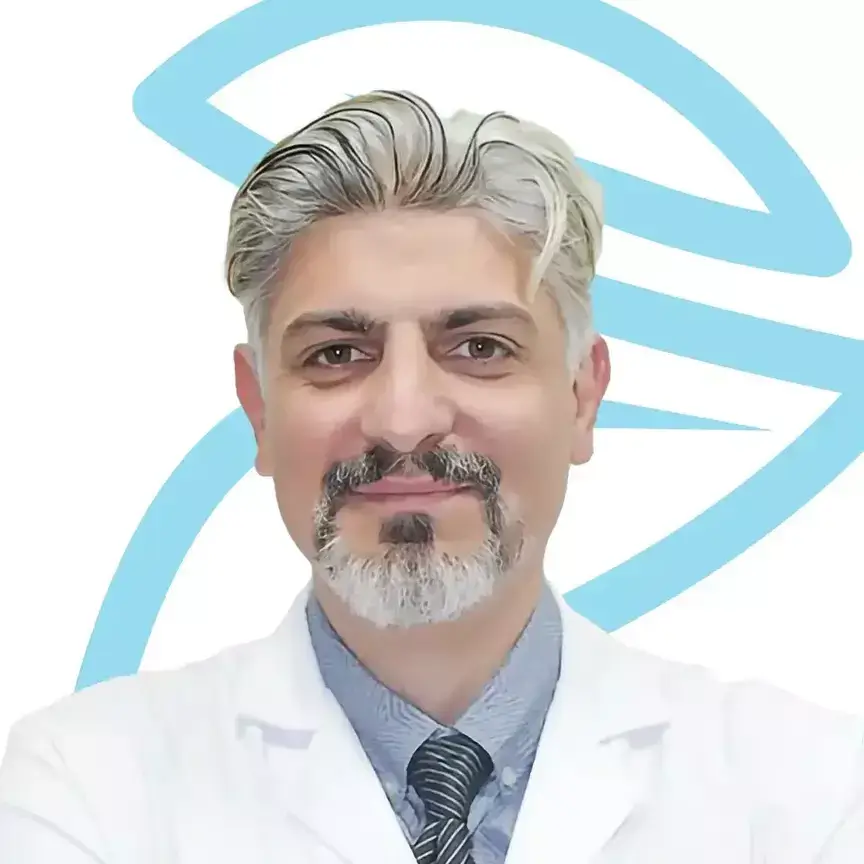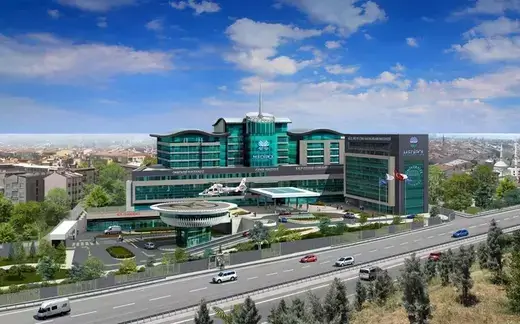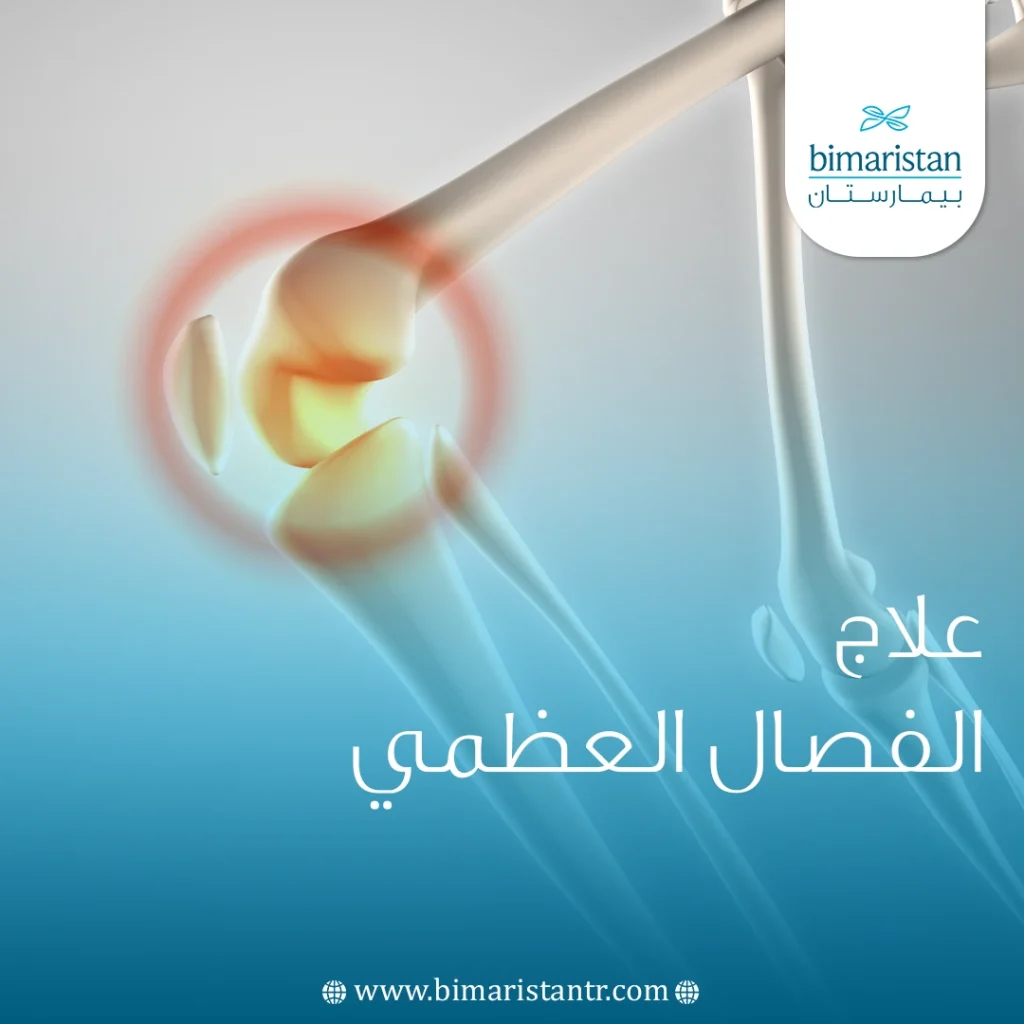مرض الفصال العظمي (التهاب المفصل التنكسي) هو أكثر أنواع التهاب المفاصل شيوعًا خاصة عند كبار السن، يملك مركز بيمارستان في تركيا خبرة واسعة في علاج الفصال العظمي.
ما هو مرض الفصال العظمي؟
التهاب المفاصل التنكسي (الروماتويدي) degenerative arthritis أو ما يعرف باسم مرض الفُصال العظمي أو التهاب العظام والمفاصل osteoarthritis (OA) هو عبارة عن تمزق غضروف المفصل وتنكس العظم الذي تحته ببطء مع الزمن مما يؤدي إلى حدوث ألم مترقي وتيبس وتشوه مفصلي.

يمكن لمرض الفصال العظمي أن يصيب البالغين بأي عمر لكنه أكثر شيوعا عند المسنين، وتشير التقارير إلى أن مرض الفصال العظمي يصيب حوالي 32.5 مليون شخص في الولايات المتحدة الأمريكية وبذلك فإن التهاب المفاصل التنكسي يعد الأشيع من بين أنواع التهاب المفاصل المختلفة.
يمكن للفصال العظمي أن يصيب أي مفصل في الجسم لكنه أشيع في اليدين والقدمين والكتف والرقبة وفي المفاصل الحاملة للوزن بشكل عام مثل الركبة والحوض والعمود الفقري.
يعتمد تشخيص داء الفصال العظمي في تركيا على علامات وأعراض المرض التي يبديها المريض ويُدعم بالصور الشعاعية.
أما علاج الفصال العظمي osteoarthritis treatment فقد يكون بسيطاً كوضع الثلج على المفصل في الحالات الخفيفة وقد يتطلب إجراء عملية جراحية في الحالات الشديدة من التهاب المفاصل التنكسي.
أسباب الفصال العظمي
يحدث مرض التهاب المفاصل التنكسي عندما يكون تلف الغضاريف بين العظام أسرع من قدرة الجسم على الإصلاح، حيث إن هذا التلف تراكمي ويزداد كلما تقدم الإنسان بالعمر خاصة في المفاصل الأكثر استعمالاً والتي تتعرض لجهد متكرر.
عوامل الخطورة لحدوث التهاب مفصل تنكسي
من العوامل التي تسرع من الإصابة بالتهاب المفاصل التنكسي (الروماتويدي) يمكن ذكر ما يلي:
- الضغط على المفصل وتحميله فوق طاقته أو الوضعيات المعيبة للمفصل على فترات طويلة.
- جراحة سابقة أو الإصابة بمرض أو رض مباشر على المفصل بما في ذلك الأمراض الخلقية كخلع الورك الولادي أو عدم تساوي طول الساقين.
- العمر: تظهر أعراض الفصال العظمي عموماً بعد سن الخمسين (ولكن ليس دائماً).
- الجنس: يزداد حدوث الفصال العظمي عند النساء أكثر من الرجال لكن السبب ما زال غير معروف.
- الوراثة: يزداد الفصال العظمي انتشاراً ضمن أفراد العائلة الواحدة.
- البدانة؛ لأن الوزن الزائد يضع حملاً إضافياً على المفاصل الحاملة للوزن كمفصل الورك ومفصل الركبة.
- فقدان المقوية العضلية التي تدعم المفاصل.
بغض النظر عن أسباب حدوث التهاب الفصال العظمي فإن النتيجة النهائية للمرض تتمثل بزوال السطح الناعم الذي تتميز به الغضاريف وتشكل سطح خشن ومدبب عوضاً عنه بسبب عمليات الهدم والبناء المستمرة، فلا يمكن للمفصل المصاب أن يتحرك بدون أن يحصل احتكاك مؤلم يعيق المفصل عن عمله.

أعراض الفصال العظمي
لعل من أهم اعراض التهاب العظام والمفاصل osteoarthritis (OA) وأكثرها مصادفةً الألم المفصلي واليبوسة المفصلية وتحدد مجال حركة المفاصل (أي انخفاض المرونة وعدم القدرة نهائياً على تحريك المفاصل كما في السابق) وتورم المفاصل، وتتميز هذه الأعراض بكونها مترقية تتفاقم شيئاً فشيئاً في حال عدم العلاج.
إن الألم المفصلي المرافق لالتهاب المفاصل الروماتويدي يتصف بأنه يتفاقم بالحركة ويتحسن بالراحة، بينما يتصف التيبس المفصلي بكونه صباحي يزداد في حال عدم الحركة خصوصاً في ساعات الصباح الباكرة ويتحسن خلال بضع دقائق من تحريك المفاصل.
من الاعراض الأخرى التي تدل على ترقي مرض إلتهاب المفاصل التنكسي:
- تشوه المفصل على الصور الشعاعية
- الانصباب المفصلي (أي تراكم السوائل ضمن المفصل)
- الضعف العضلي الناتج عن عدم الحركة
- تحدد مجال الحركة بشكل واضح
- سماع أصوات فرقة عند تحريك المفاصل
- الألم الشديد الذي يجعل من الصعب القيام بالأعمال البسيطة كالمشي
ومع تطور الإصابة بالفصال العظمي يصبح الألم مستمراً حتى أثناء الراحة، كما يستمر أثناء الليل وقد يوقظك من نومك، وقد تضطر إلى تجنب الكثير من النشاطات والحركات التي تسبب تفاقم الألم كالصعود على الدرج والقيام من المرحاض.
إن ظهور مثل هذه الأعراض قد يجعل الجراحة هي العلاج الوحيد لمرض الفصال العظمي، لذلك إذا أحسست بألم في مفاصلك فلا تهمل نفسك وسارع بالتواصل مع مركز بيمارستان الطبي في تركيا من أجل اكتشاف الحالة في وقت مبكر وتجنب حدوث الاختلاطات الغير عكوسة.
قد يكون للفصال العظمي أعراض مختلفة بحسب المفاصل المصابة:
- الفصال العظمي في اليد والأصابع: نلاحظ تضخماً في العظام وتغيراً في شكل المفاصل يزداد مع مرور الوقت.
- الفصال العظمي في القدم والكاحل: قد يسبب ألماً وتيبساً وتورماً في قدم المريض خصوصاً بعد المشي والرياضة.
- الفصال العظمي في الركبة: يمكن سماع أصوات طقطقة أو احتكاك في مفصل الركبة أثناء الحركة أو المشي، مع الوقت قد يؤدي ضعف العضلات والأربطة المحيطة بالمفصل إلى انثناء في الركبة.
- الفصال العظمي في الورك: قد يظهر الألم والتيبس في مفصل الورك نفسه أو المغبن أو الفخذ أو أسفل الظهر وقد ينتشر إلى الركبة أحياناً، يظهر تحدد الحركة بوضوح مع تطور الفصال العظمي.
- الفصال العظمي في الظهر (العمود الفقري): يتظاهر بألم أو تيبس في الرقبة أو الظهر، مع ظهور التغيرات العظمية قد يحدث تضيق القناة الفقرية وما يرافقها من مشاكل وأعراض أخرى.
تشخيص الفصال العظمي في تركيا
يتطلب تشخيص المرض سماع شكاية المريض والأعراض التي يعاني منها بالتفصيل، ومن ثم فحص المفاصل المتضررة سريرياً وتصويرها باستخدام تقنيات التصوير المختلفة وإجراء التحاليل المخبرية، إذ لا يوجد اختبار نوعي واحد يكشف عن التهاب المفاصل التنكسي مباشرة.
سيقوم الطبيب بطرح العديد من الأسئلة حول مرضك من أجل التشخيص ومحاولة معرفة العوامل المسببة؛ مثل الوقت الذي بدأت تحس فيه بالألم والأوقات التي يتفاقم فيها الألم والأوقات التي تشعر فيها بالراحة وما هي الأمراض المفصلية التي كنت تعاني منها منذ طفولتك وما هي طبيعة عملك…
يعتبر التصوير بالأشعة السينية X-ray ضرورياً جداً لتشخيص الحالة ومعرفة مدى ترقي المرض.
تتميز الصورة الشعاعية للمفصل المصاب بالفصال العظمي ببعض الملامح الخاصة؛ إذ يمكن ملاحظة خشونة الغضروف المفصلي وتضيق المسافة المفصلية وظهور نتوءات (مناقير) عظمية على الحواف المفصلية وتصلب العظم تحت الغضروف المفصلي أوتشكل كيسات تحت غضروفية.
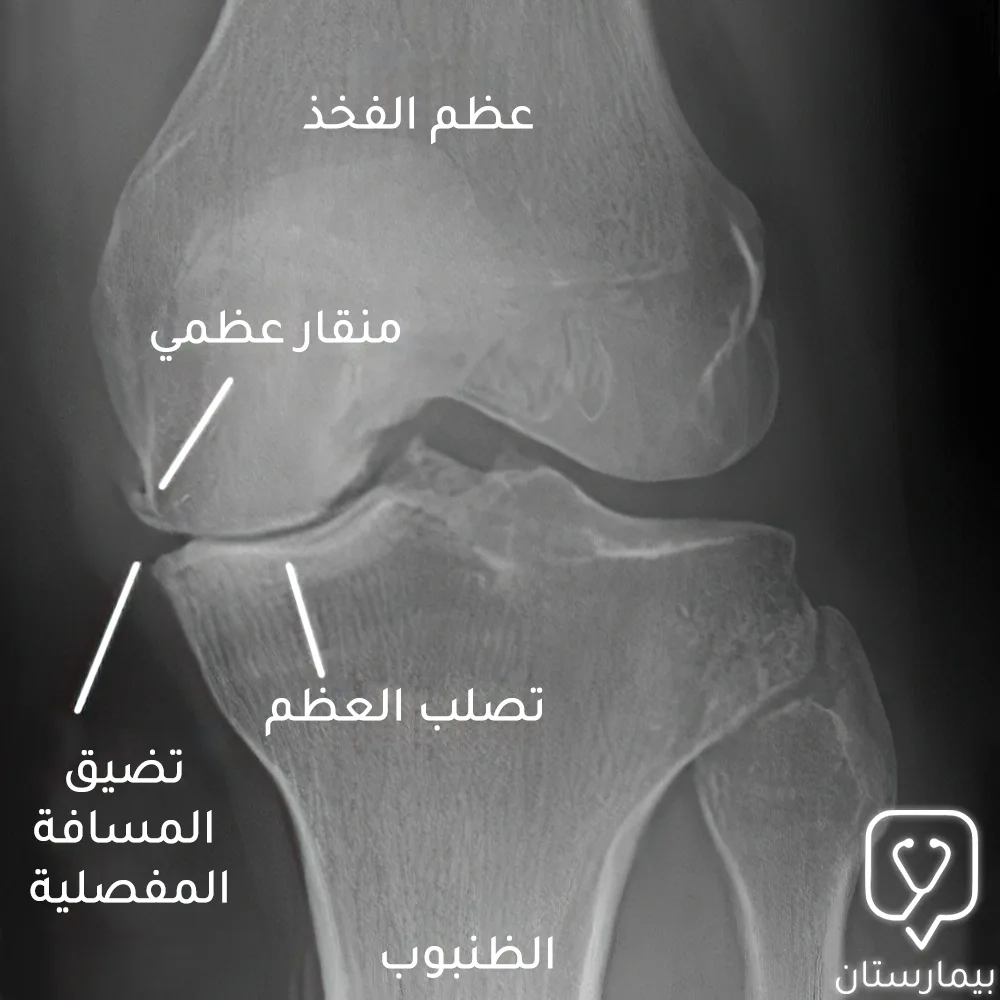
قد يستخدم التصوير الطبقي المحوري المحوسب CT أو التصوير بالرنين المغناطيسي MRI للحصول على مزيد من المعلومات الأكثر دقة، كما يمكن بزل السائل المفصلي لاستبعاد الأسباب الإنتانية والقيام ببعض التحاليل المخبرية لاستبعاد أنواع التهاب المفاصل الأخرى.
في مركز بيمارستان الطبي في تركيا سيقوم أطباء مختصون في تشخيص وعلاج الفصال العظمي بإجراء فحوصات شاملة لتحديد نوع الالتهاب لديك وتصميم الخطة العلاجية الأمثل لحالتك.
علاج الفصال العظمي في تركيا
تتوفر العديد من طرق علاج الفصال العظمي في تركيا بحسب حالة كل مريض، قد يتلقى المرضى أكثر من علاج للحد من تطور التهاب المفاصل التنكسي وتخفيف الأعراض ومحاولة استعادة الوظيفة الطبيعية للمفصل لكن مع الأسف لا يوجد علاج شافي تماماً للحالة.
يلاحظ في المراحل الباكرة أن علاج الفصال العظمي osteoarthritis treatment يقتصر على الطرق المحافظة كإجراء بعض التغييرات على نمط الحياة أو المعالجة الفيزيائية أو الادوية المسكنة للألم، أما في حال تقدم الاعراض فقد يُلجأ إلى الحقن ضمن المفاصل المصابة أو الجراحة من أجل علاج الفصال العظمي.
علاج الفصال العظمي بإجراء تغييرات على نمط الحياة
يتم التركيز على تخفيف وزن مريض الفصال العظمي وعلاج السمنة المفرطة لديه، قد يساعد إنقاص الوزن على تقليل الألم وإبطاء تلف الغضاريف المفصلية خصوصاً في المفاصل الحاملة للوزن.
سيقوم أخصائي التغذية في مركز بيمارستان بالإشراف عليك وتقديم النصائح الغذائية لمساعدتك على إنقاص وزنك بصورة آمنة وفعالة.
تساعد الرياضة المعتدلة والمنتظمة أيضا على استعادة الحركة المفصلية الطبيعية وتقوية العضلات التي تدعمها وتخفيف الم المفاصل، إلا أن ذلك يفضل أن يكون تحت إشراف مقدم الرعاية الصحية الذي يمكنه وضع برنامج مخصص لتمارين الفصال العظمي من أجل الحفاظ على لياقتك بدون الضغط على المفاصل وإتلافها.
علاج الفصال العظمي بواسطة المعالجة الفيزيائية
يملك العلاج الفيزيائي نفس فوائد التمارين الرياضية من حيث تحسين الحركة وزيادة القوة العضلية إلا أنه يكون تحت إشراف معالج فيزيائي مختص ويُلجأ إليه في حالات الفصال العظمي الأكثر شدة من أجل إعادة تأهيل المفاصل المصابة دون التسبب بألم شديد للمريض.
من فوائد المعالجة الفيزيائية أيضاً أنها تساعدك على التعايش مع مرض الفصال العظمي وتأدية مهامك اليومية بسهولة وسلاسة، كما أنها تجنبك السقوط من خلال تحسين التوازن واستخدام مشايات أو أدوات أخرى، قد تساعد المعالجة بالحرارة والبرودة على تحسين الأعراض لفترة قصيرة.
علاج الفصال العظمي بالأدوية
في سياق علاج التهاب المفاصل التنكسي قد يصف لك الطبيب بعض الأدوية للتخفيف من الألم والالتهاب المرافقين للفصال العظمي يمكن أن تكون موضعية أو فموية أو تُعطى عن طريق الحقن داخل المفاصل.
ولعل أفضل علاج لالتهاب العظام والمفاصل هو المشاركة الفموية بين مسكن الألم acetaminophen مع أحد مضادات الالتهاب اللاستيروئيدية NSAIDs كالإيبوبروفين والنابروكسين والديكلوفيناك، إلا أنه على الرغم من فائدتها فلابد من الحذر عند استخدامها لفترات طويلة.
ويمكن تطبيق مسكنات ألم موضعية على الجلد المغطي للمفاصل المصابة على شكل كريمات أو مراهم أو لصاقات أو بخاخات، وهي لا تحتاج إلى وصفة طبية لاستخدامها وتستخدم لتخفيف آلام المفاصل متوسطة الشدة إذا لم ترغب باستخدام المسكنات.
يمكن أيضًا حقن ستيروئيدات أو سوائل مزلقة مثل الحمض الهيالوروني داخل المفاصل المصابة بالفصال العظمي باستخدام حقن موجهة بالإيكو لتسكين الآلام وتخفيف الالتهاب، وقد تساعد على تأخير عملية استبدال مفصل الركبة بضع سنوات عند بعض المرضى.
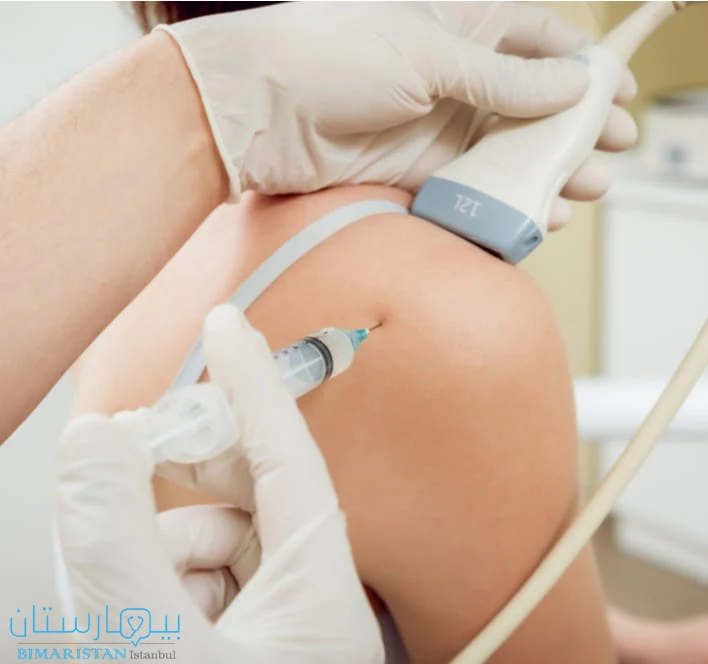
علاج الفصال العظمي بالأعشاب
أثبتتت الدراسات وجود أعشاب للعظام والمفاصل مثل خلاصة زيت الأفوكادو وفول الصويا avocado-soybean unsaponifiables (ASUs) قد تنتج تسكيناً طفيفاً للألم وتحسناً في الوظيفة، إلا أن التحسن كان بسيطاً وقد لا يشعر به المريض كما أن هذا العلاج فعال في علاج الفصال العظمي في مفصل الركبة أكثر منه في مفصل الورك.
علاج الفصال العظمي بالجراحة
على الرغم من أن بعض التغيرات العظمية في التهاب المفاصل التنكسي غير عكوسة إلا أن عدداً قليلاً من المصابين بهذا المرض سيحتاجون إلى إجراء جراحة في تركيا من أجل علاج الفصال العظمي.
يُلجأ للجراحة في تركيا في حال فشل العلاجات السابقة جميعها في إراحة المريض أو عدم القدرة على تطبيقها أو عند وجود إصابة عظمية واسعة وشديدة، تتضمن الإجراءات الجراحية في تركيا ما يلي:
- قطع العظم osteotomy: تُجرى عن طريق الجراحة المفتوحة على المفصل أو بواسطة المنظار، يتم فيها إزالة بعض الأجزاء المتأذية من العظم وإعادة نمذجتها.
- التنضير بالمنظار arthroscopic debridement: تستخدم لإزالة الزوائد العظمية والنسيجية من أجل الحفاظ على حركة المفاصل، وذلك باستخدام منظار المفاصل الذي يتميز بكونه طفيف التوغل.
- تبديل المفصل arthroplasty: يُلجأ إليه في حال عدم القدرة على إصلاح المفصل، تعد مفاصل الركبة والورك أشيع المفاصل التي يتم استبدالها بمفاصل أخرى صناعية، يمكن في تركيا إجراء استبدال مفصل الركبة الجزئي بدلاً من من استبدال مفصل الركبة الكامل إذا كان التلف لا يشمل المفصل كاملاً.
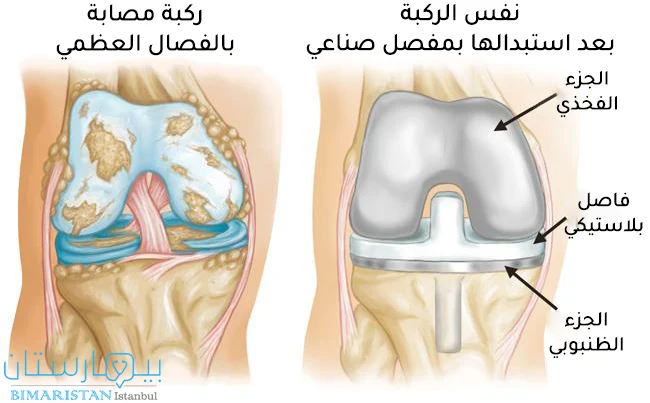
لقد تطور العلاج في تركيا بشكلٍ كبير في الآونة الأخيرة وخصوصاً في مجال الجراحة العظمية وتم تزويد المشافي التركية بأحدث الأجهزة والتقنيات لتواكب عجلة التطور في المجال الطبي حول العالم، إضافة إلى توفير كادر طبي مميز قادر على الاستفادة من هذا التقدم يرافق المريض خطوة بخطوة نحو الشفاء.
